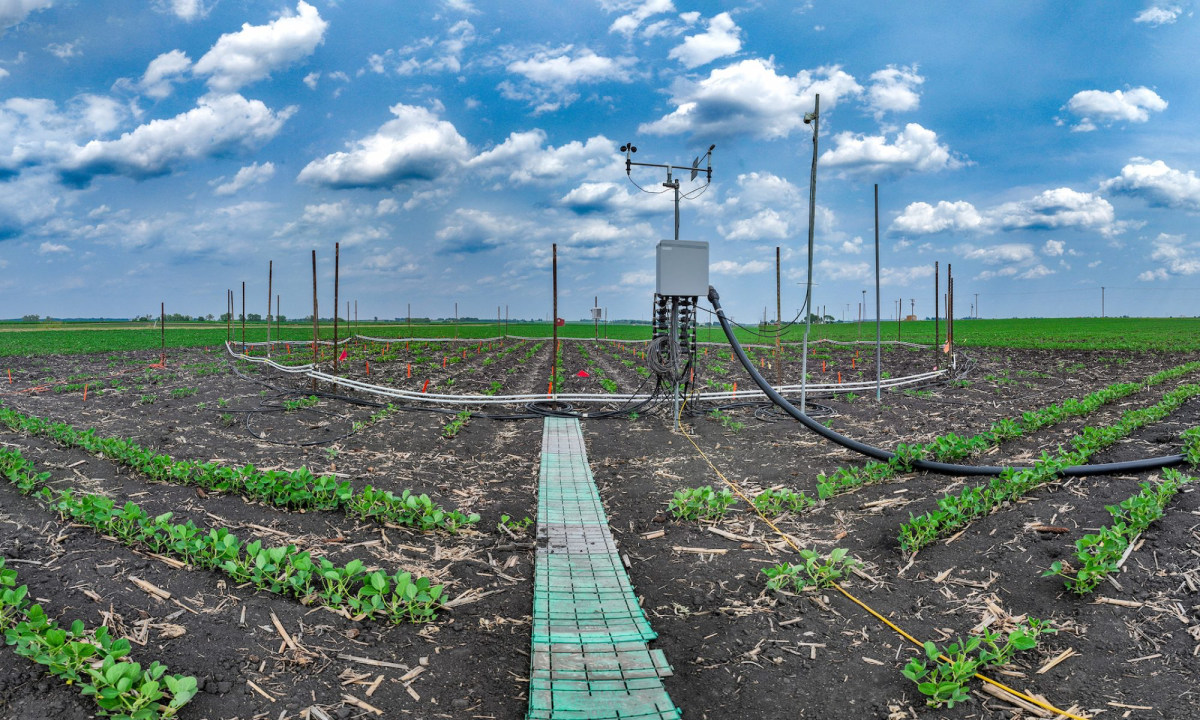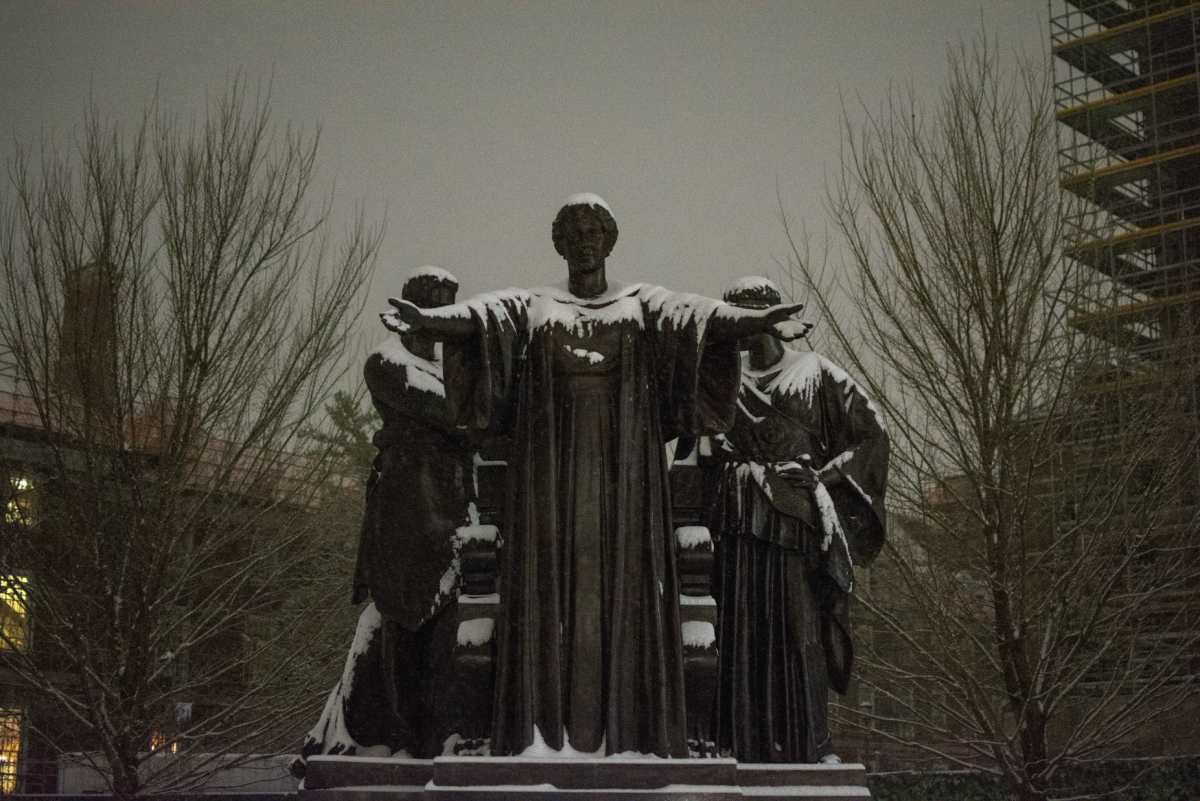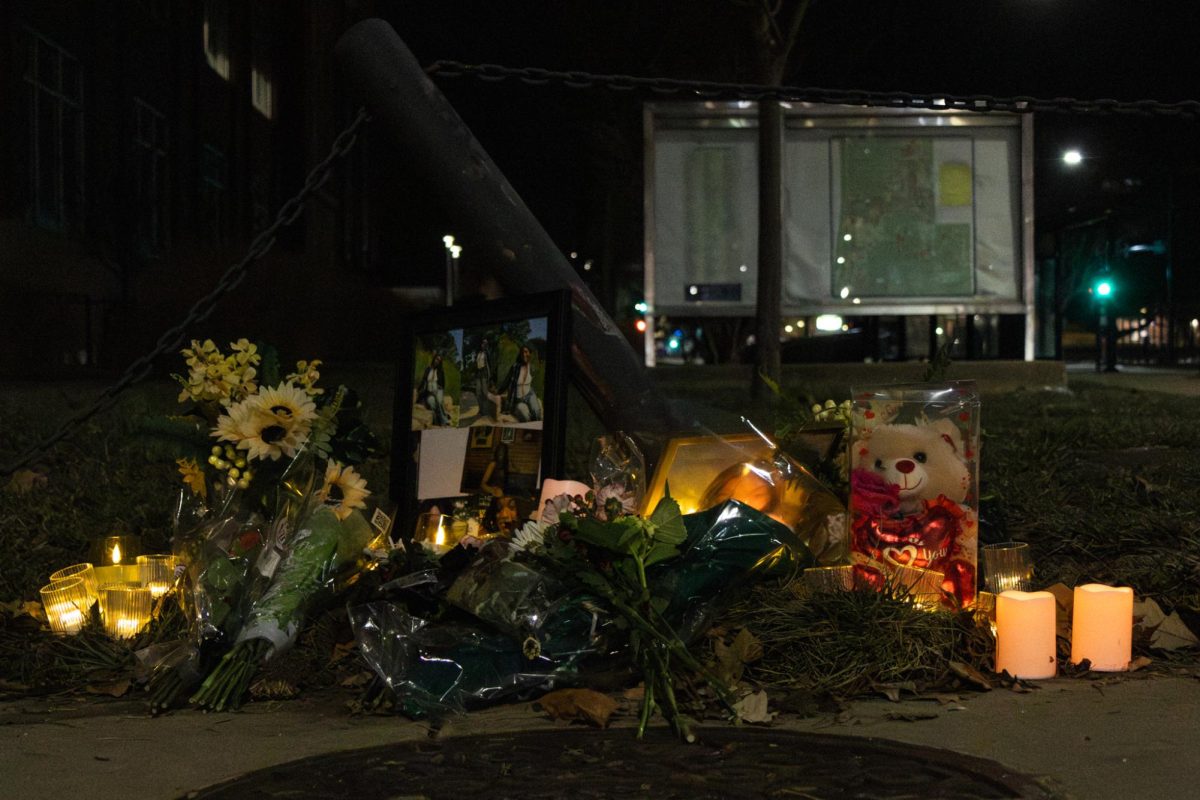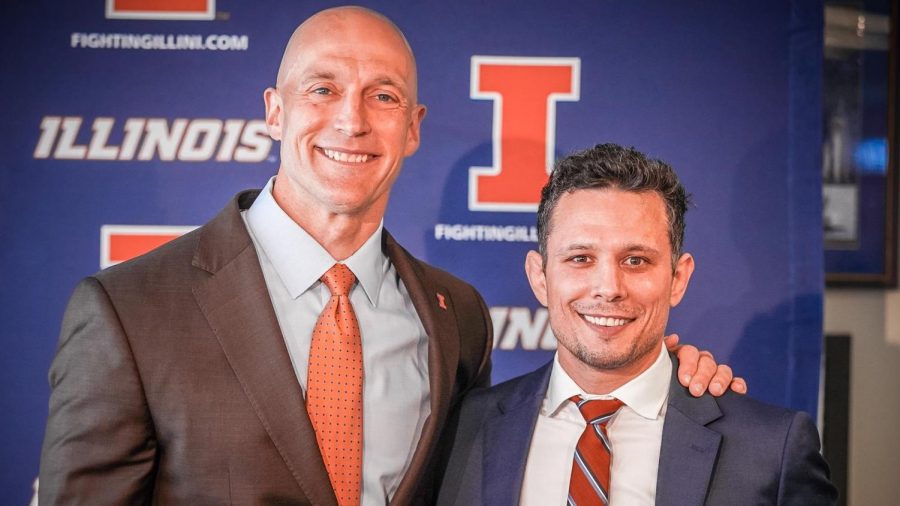Human-instigated climate change has been known to be irreversible for quite some time now. However, its most extreme effects can still be dampened. The University-based Soybean Free Air Concentration Enrichment facility’s mission has grown beyond crop observation.
The team has pioneered mitigation and adaptation strategies to address the shifting climate, as rising concentrations of atmospheric carbon dioxide and consistently hotter years threaten farms throughout the Midwest.
Spread over 32 hectares of farmland, SoyFACE’s titular FACE experiments can be spotted by the octagonal rings of pillars surrounding its subject crops and the strings of fumigation tubes that corral them.
Using an algorithm to measure the wind conditions and gas concentrations within the ring, the tubes intermittently spray the crops with carbon dioxide, setting the air composition inside the rings between 550 and 600 carbon dioxide molecules per million molecules of dry air. The current atmosphere is around 420 carbon dioxide parts per million.
By purposefully changing the air within FACE rings to a greater carbon dioxide concentration, SoyFACE is simulating what the atmosphere may look like in 2050 to observe how crops grow in those conditions.
Get The Daily Illini in your inbox!
After more than 20 years of collecting data from FACE, SoyFACE found that the heightened carbon dioxide in the atmosphere increases the crop yield by up to 20% for soybeans, rice and wheat — also known as C3 crops. However, those same crops lose around 5% of their nutritional value.
One prevailing hypothesis on why crops are experiencing nutrient degradation in these conditions coincides with plant transpiration.
When plants “breathe,” they also expel water from their bodies through small holes called stomata. In higher carbon dioxide atmospheres, plants reactively close their stomata, reducing their ability to “exhale” water. To balance this, the plants absorb less water through their roots, but soil water is where plants intake most nutrients.
“If it’s not able to pull up that water, then it’s not going to be able to pull up a lot of nutrients that come along with the water,” said Terence Seldon Kwafo, graduate student studying plant biology and a researcher at SoyFACE. “That would affect farmers’ livelihoods directly, and especially in the Global South, where those crops are very important for nutrition.”
Kwafo is still determining its ultimate impact on human health, particularly if the nutritional decrease could be offset by the larger crop yields. In the meantime, SoyFACE is actively searching for ways to improve crop nutrition.
“There have been lots of concerns that this will be the great nutrient collapse,” said Elizabeth Ainsworth, lead investigator at SoyFACE. “(But) we have strategies for increasing nutrient concentration in grains … I think that this is something that we can breed for and breed against the negative consequences there.”
While the real-world application of SoyFACE’s research is still in its infancy, Ainsworth sees great potential in the possible innovations spurred on by its findings, especially in bioengineering. The facility has already connected with farms and labs to push its studies toward a worldwide conversation.
“We’re all inhabitants of the same planet, and so we’re working together to ensure that we have strategies to maintain the sustainability of this planet,” Ainsworth said. “There are many groups working to reduce the water use of crops, to improve the ability of crops to sequester carbon … a lot of that work is promising.”
FACE is just one experiment held at SoyFACE. Higher-temperature simulations like T-FACE, basalt rock-soil infusions to test carbon sequestration like RockFACE and plant genome research with collaborators from Africa to grow hardier, drought-resistant crops are only a few of the other studies that SoyFACE is doing. Information about its other projects is available on its website.
For students curious about opportunities at SoyFACE, Kwafo encourages them — even those without biology degrees — to join the fray. He is one of many graduate students conducting climate change and natural disaster experiments in SoyFACE. His experience in the facility has been a “great learning experience.”
“Everybody wants to collaborate with you; everybody wants to work with you,” Kwafo said. “You have people from basically all over the world coming in here to do such amazing research, and so coming in as an undergrad and not knowing a lot about this topic, and having people … to share a lot of knowledge (with) — that’s been done here (and) has been just an amazing experience.”






